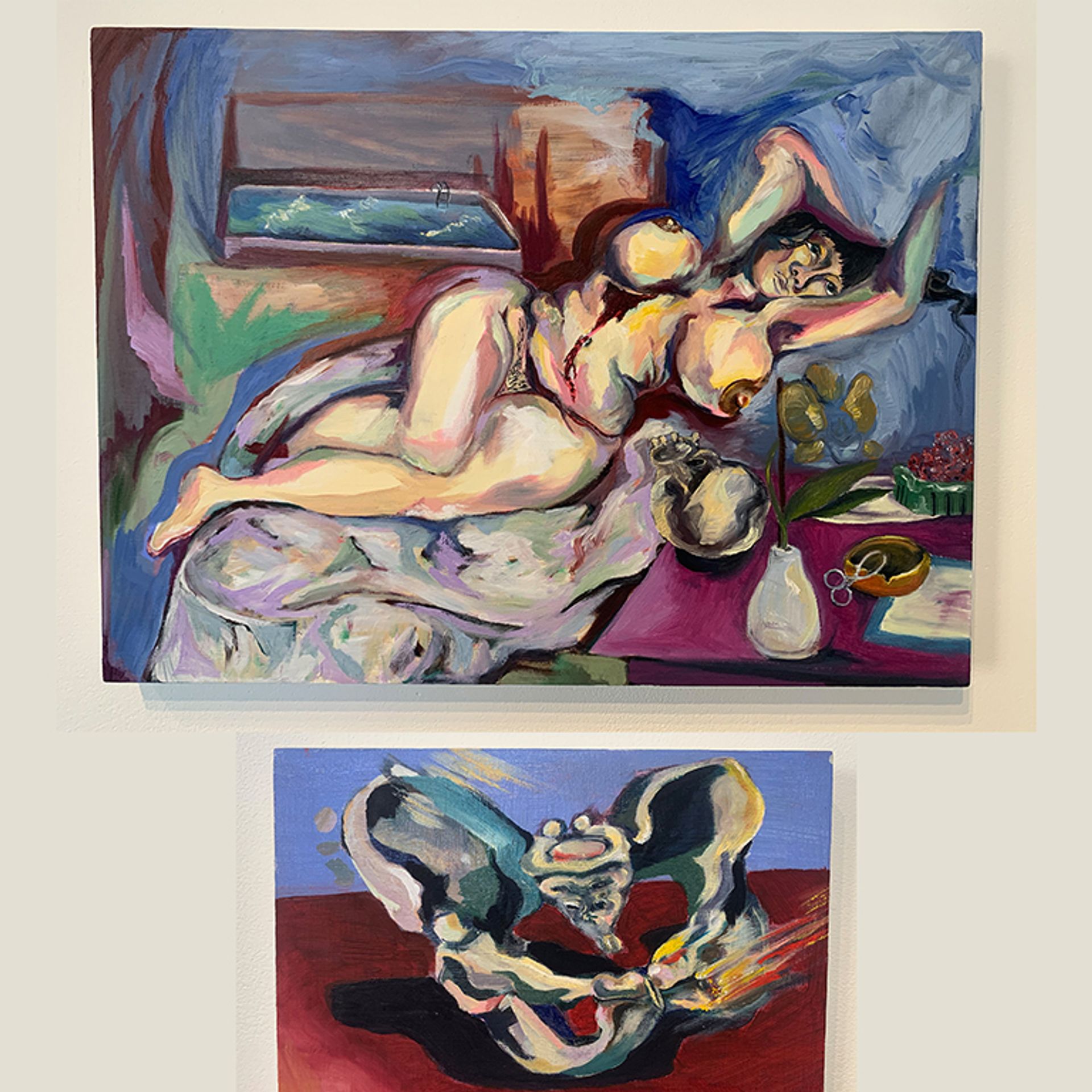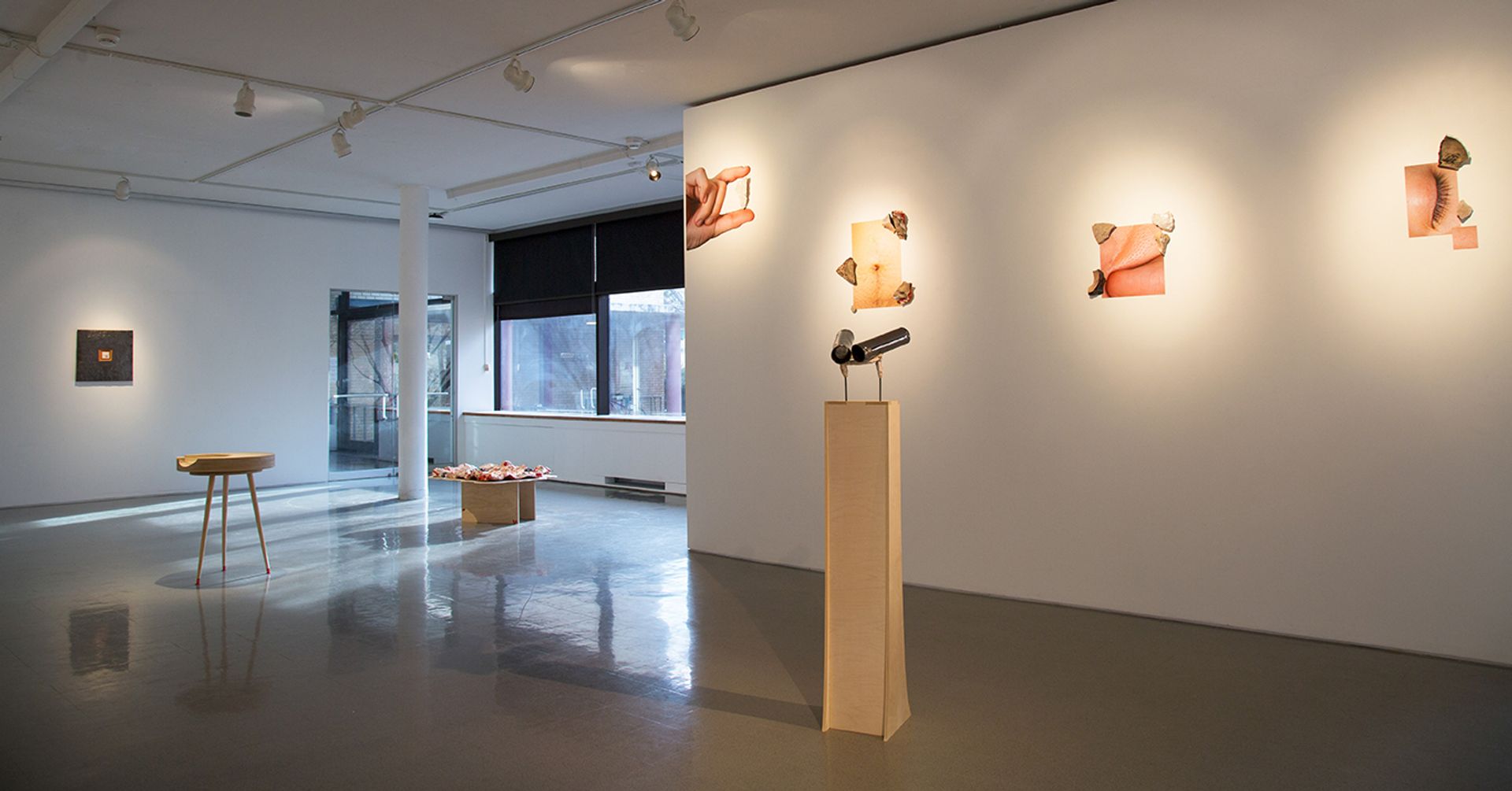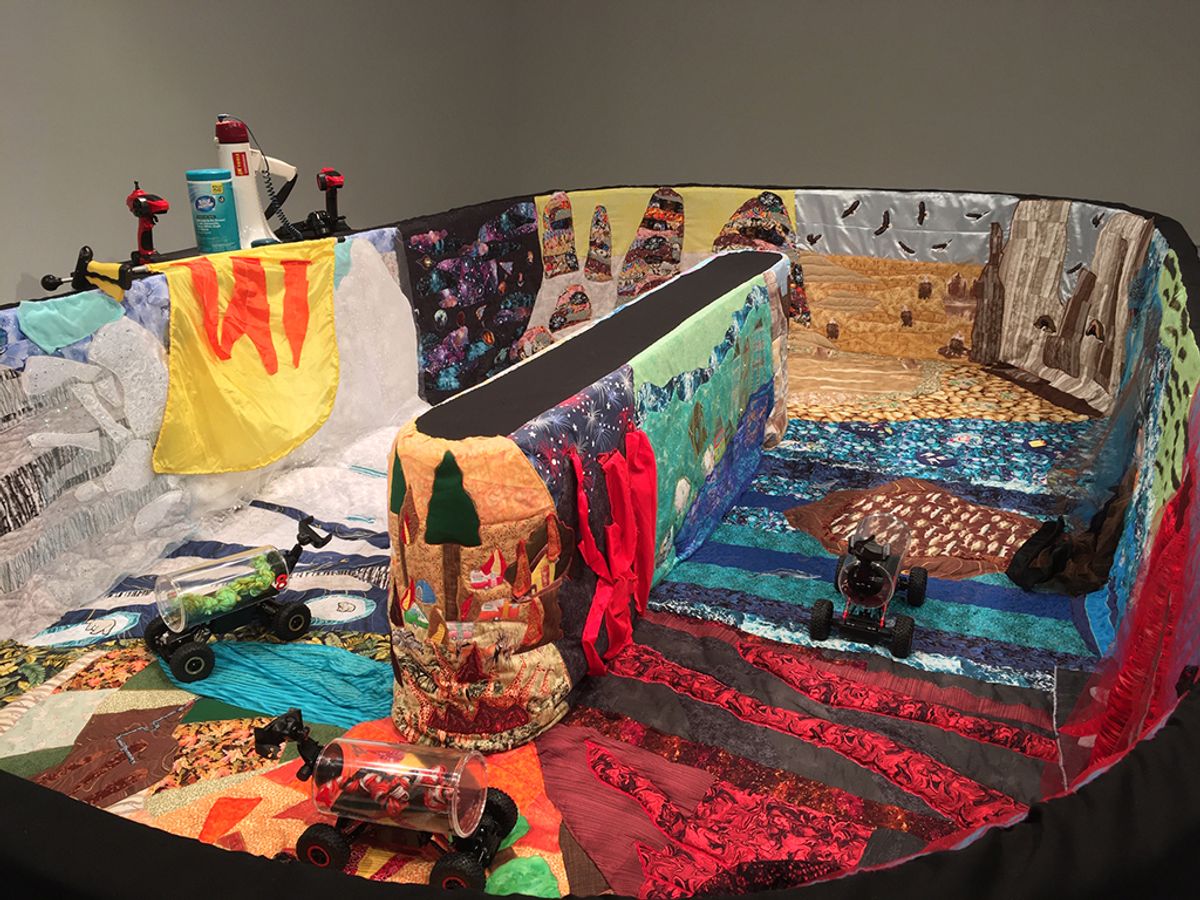As the coronavirus spreads, colleges and universities across the globe have cancelled in-person classes and shuttered their campuses, leaving BFA and MFA thesis exhibitions in the lurch. These shows represent countless hours of classroom and studio preparation, and for young artists, they are a unique opportunity to apply theory and method to a significant project.
Late last week, the artist Benjamin Cook, an adjunct professor at the Art Academy of Cincinnati, saw how discouraged and heartbroken students were when the school prudently began to limit the number of guests at BFA exhibits. Quickly he grasped how this particular capstone would be a casualty of the coronavirus, as well as the possibility of harnessing Instagram’s immediate power in the cultural sphere to host works of art for the foreseeable future.
To help, Cook launched Social Distance Gallery on Instagram that so graduating students worldwide would at least have virtual space to showcase their theses amid the pandemic. The account solicits work from BFA and MFA students whose shows have been cancelled or limited in any way. “If they have put the work in and were scheduled to have a thesis show, then I will post them,” Cook assures artists. “I’m not here to play the role of curator.” But there is a caveat: he won’t post work that may violate the site’s obscenity policies. “Instagram has some weird rules dealing with nudity and I don’t want one image to take this whole thing down,” he explains. “If someone submits something I’m unsure of, I will reach out to the artist and try to find a way to get their work on the page in a way they are happy with.”
So far Social Distance Gallery has received photos from artists at schools including Studio Arts College International, Virginia Commonwealth University, the Maryland Institute College of Art and the University of San Diego. “There was a palpable sense of excitement, community and anticipation to celebrate this milestone and the beginning of our professional careers,” says Ruby Hana Williams, who will receive her BFA from the School of the Art Institute of Chicago this spring with an emphasis on painting and drawing. Both the campus and the BFA show there have been closed since 16 March. Included in her presentation, The Death (and) Rebirth of Venus, are three oil paintings and a mixed-media collage. She is most disappointed about not physically displaying her self-portrait that tackles Picasso’s Nude Under a Pine Tree (1959), housed at the nearby Art Institute of Chicago.

The Death (and Rebirth) of Venus (2020) by Ruby Hana Williams, who is earning her BFA at the School of the Art Institute of Chicago Ruby Hana Williams
Cook anticipates posting student exhibitions through the end of the school year, though he cautions that he may need to work into the summer to feature all of the applications he is receiving. Among the MFA projects submitted is that of the interdisciplinary artist Tyler Matheson, a candidate at the University of Waterloo: “Sharing my work on social media is looking like the last resort to sharing the thesis work I’ve produced over the last two years,” he says.
By some measure, Social Distance Gallery is also an extension of Cook’s own artistic practice, which he says explores the spaces that exist between the digital and physical realms. In Some Walls Are Made of Bricks, for example, Cook sold editions of paintings as individually signed files for people to hang on their Instagram walls. “It’s not that I see digital versions of work as better than physical ones,” he says. “But I certainly do not see them as worse.” Perhaps, he says, Social Distance Gallery has the potential to change the way people think about consuming art.
“I’m not really sure what the end of this project will look like, as everything has been happening so fast,” Cook says of Social Distance Gallery. “But I hope it is one of many that digs through the turmoil and tries to find some meaning.”

An installation view of Anthony Kascak's Do you wanna go dancing? (2020), created for the University of Arkansas School of Art's MFA thesis exhibition Anthony Kascak


